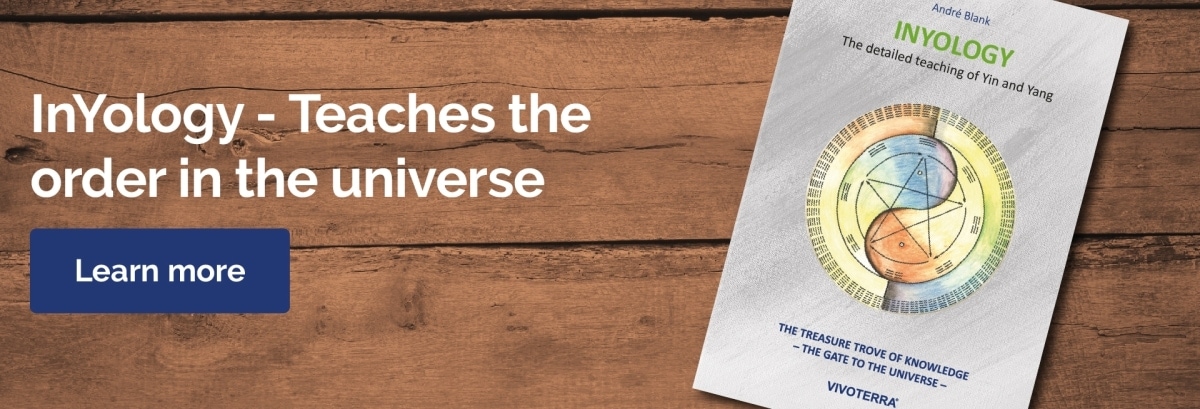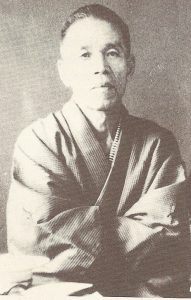In Japanese, Mushotoku means “not wanting to attain anything, not having a goal”. This is the essence of Zen of Master Dogen and all the patriarchs.
What does mushotoku mean?
Mushotoku is a concept found in Zen teachings. It means: Without striving for personal gain. Doing the best you can without any goal or purpose.
In the so-called “ways”, the term Satori is used for this. This state makes it possible for a person to intuitively comprehend the world and not merely to consider it as an object. In this way, he or she is able to abandon the straight lines of thought of the intellect, and develop an intuitive thinking that guides them. In Soto Zen, this experience is brought about by silent meditation (Shikantaza)
The mushotoku spirit
The mind should not strive to obtain anything, whatever it may be. It should not be attached to any object, to any thought, it should not strive for profit nor for any result. A person should not want to gain anything for themselves, for their ego. For when the mind attaches itself to a goal, it locks itself into its own ideas, opinions and prejudices. The wisdom, the spiritual light, the cosmic energy “komyo” can then not penetrate it.
Mushotoku in Zen
You inevitably move away from the authenticity of zazen if you fixate on an object, if you have the slightest prejudice, the tiniest thought, or if you pursue a goal, no matter how small it may seem.
Even if you believe that you are truly practicing zazen because you have become a monk, respect the commandments and follow a strict practice, if you persist even on the smallest object, you will fall prey to error, egoism and dogmatism.
Don’t even get attached to zazen. When you are doing well, don’t be attached to such wellbeing. When you are having a discussion, do not be attached to the discussion. When you are having sex, don’t be attached to the sex. This is the Mushotoku mind – existence without a goal.
Do not create a mind that persists, that clings to the visible things, the sounds, the smells, the touch, the tastes, and the objects of consciousness.
“When the mind does not persist on anything, the true mind appears.”
When the sixth patriarch, Eno, heard this sutra being recited, he awoke.
“Just sit down in zazen, practice Shikantaza, and realize your true face.” (Master Dogen)
Shikantaza – just sit
Shikantaza means simply sitting down, surrendering to your body and mind, without any goal, even without wanting to achieve Satori.
“Satori is total destruction, complete loss, abandonment, death, the extinction of oneself and any personally motivated quest.”
Master Kodo Sawaki
Correct posture
By acting without a goal and without any intention, a person becomes one with the action itself. This results in great merit and the greatest happiness.
Without a goal, everything is possible. With open hands, one can receive everything. This means becoming one with the entire cosmos. Only in this way can we use our ordinary body, our human body, to practice zazen with the whole cosmos.
The body of zazen is beyond anything that can be measured. When you forget yourself, the whole cosmos becomes your true body.
“Without being influenced by your personal intelligence.”
This is the complete abandonment of the self, its thoughts and all of its intellectual products that form the background for the development of the ego, of individuality.
“You have to give up such practice that is based on intellectual understanding, that chases after words, and that clings to the letters. You must learn the middle way that directs your light inward toward yourselves to illuminate your true nature. Body and mind will fall away on their own and your true self will appear.”
“Without being full of yourselves because of the experience you have acquired in the dojo.”
Humility is the strength of all great people. Understanding that we are always only halfway along the path. To stop thinking means to have understood everything. True wisdom enables one to observe one’s own limitations.
Real wisdom transcends all mental limitations. Without a goal and without consciousness, it does not appear from the cerebral cortex but from the thalamus, the brain stem, and is generated by the entire body.
The wise man is in harmony with the reality of things. He has given up his personal ego, his own consciousness has unconsciously and automatically melted away, and he is very naturally following the cosmic order.
Buddha was Mushotoku
“To fathom the Way of The Buddha means to fathom yourself. To fathom yourself means to forget yourself. To forget yourself is to be one with the ten thousand things. To be one with the ten thousand things means to let go of our own body and mind and the body and mind of the world around us.”
The most important point is “to let go of your body and mind”.
That means to forget one’s attachments, to become one with the teaching of Buddha and to reject the illusions of mine and yours.
Shinjin datsuraku
Body and mind liberated and sloughed off.
Shinjin means: body and mind in unity, the non-dualism of mind and matter; datsu: to detach oneself, liberate oneself, emancipate oneself;
raku: to let go, give up, discard.
Give up the body-mind and let it go. Through this giving up in itself, it is already liberated.
Master Dogen’s teaching on Mushotoku
Master Dogen had brought this experience to fruition in the dojo of his master, Nyojo. He had experienced it as an echo in his innermost being when one morning, while practicing zazen with the others, Nyojo caught sight of a monk slumbering away.
In an angry voice, he said, “Practicing zazen means letting go of body and mind. Why are you wasting your time sleeping?”
Nyojo then hit the monk so hard that he fell from his seat. At first Dogen was very shaken by it, but afterwards he was filled with immeasurably great joy. As soon as the zazen session was over, he went to his master’s room. He lit an incense stick and prostrated himself.
Nyojo said to him, “Why are you doing this?”
“I have just cast off my body and mind.”
“You really discarded them,” Nyojo replied.
Dogen humbly continued, “I am only just making it happen Please don’t give me your approval so easily.”
“I do not.”
Dogen insisted, “How can you tell that I am ready?”
Nyojo simply said, “The mind and body have fallen away.”
At that moment, Dogen prostrated again as a sign of respect and gratitude.
This short story provides the key to the practice, its outcome and its realization. It is the source of the teaching of Master Dogen and of all the Zen patriarchs.
Until a person has truly discarded the body-mind, that is, the self, the limited ego, this linkage of attachments, desires, fantasies, projections and prejudices, he cannot realize the spirit of awakening, namely bodai-shin.
Shinjin datsuraku means: the unity of body and mind is finally realized in samadhi, the awakening. And so our conditionings, conceptions and determinations that create a separation between us and ultimate reality also dissolve. There is then no longer any separation between the whole universe, the cosmic order, the dharma and us, no longer any difference between the inner and the outer.
And for those on the path of awakening, everything in nature becomes instruction, since the universe is Buddha’s own body, the dharmakaya.
Likewise, when one sheds the body-mind, the body of awakening also becomes the dharmakaya, the absolute, universal, timeless body of the Buddha.
Shinjin datsuraku is a rebirth, a resurrection. The conditioned self is dropped and the Buddha nature has updated. Dogen had experienced it in his flesh, his bones, his marrow, and in his mind.
In zazen, none of the sensory organs function consciously anymore. Nonetheless, they exist. But since they are at rest, they naturally follow the cosmic order.
To be fully present here and now in body and mind by truly letting go, by ceasing to cling to images, opinions, ideas, projections, and prejudices we have of ourselves, of others, and of what surrounds us.
Letting go to free ourselves from the snare in which man is held captive by identifying with his own ego. This means letting go of the “old self” that the Church Fathers speak of, and allowing a new being to emerge from the human being who has awakened to the true reality of things. This is the transformation, the metanoia, the turning back of the mind to komyo, the source, the origin, to ku, the emptiness.
Taisen Deshimaru Roshi
Master Deshimaru called this “returning to zero”.
The zero represents the emptiness, the void, the origin. Zero gives rise to diversity. The multiplicity arises from the emptiness.
In zazen, the mind moves from thinking to non-thinking and from non-thinking to thinking. The point of connection is the zero point. All manifestations proceed from the zero point and return to the zero point. The cells of the body and the mind originate from the zero point and return to the zero point. It is the same with exhalation. At the end of the exhalation, consciousness reunites with ku, with the emptiness.
To plunge completely into the light of the spiritual world, the unlimited, invisible world, the deep, flowing world and not into that of air bubbles. Into the world of emptiness, the eternal world, the cosmic order, God, Buddha.
“Most people turn to the manifestations alone, to the material, limited world. Through zazen one can discover the invisible world, be in contact with that which does not manifest. This is the realization of the unity of the visible and invisible world.”
“Plunge completely into komyozo, with all the energy of your body and mind, without turning around to look at the time.”
To plunge all the energy of our body and mind completely into the invisible world.
The activity of our body and mind corresponds to the connection of a material energy, generated by what we ingest and transform through food and through each of our senses, and a non-material energy that is part of the universal energy.
Through the motionlessness of the zazen posture, through the stillness and through exhalation, we can feel the energy, the activity (Japanese Ki, Chinese Qi) that is concentrated in the pelvis. Thanks to the firm resting of the knees on the ground, this force sinks towards the earth. There it takes root like a tree, and as the scientists put it, it then rises again, following a circular vertical motion.
It spreads to the fingertips and to the highest point of the skull; it extends even further beyond that. It reaches toward the sky, the moon, the stars, the cosmos.
“One person who practices zazen affects the whole cosmos.”
Master Dogen
The exhalation causes a specific exchange between us and the cosmos.
The Ki recharges itself in the lower abdomen and follows a circular movement that connects us with the cosmos. However, the flow must not encounter any obstacle or tension. The Ki, the activity, is the revelation of the universal energy within us. And the transformation of this energy through our body creates the life force. When the Ki is strong, life is intense and full of energy; when it is weak, the life force is also weak, and when a person has no more Ki, he or she dies.
Through a long, slow and deep exhalation, the activity develops naturally in the center of gravity of the body, in the Hara. In this way, everything becomes clearer and lighter.
There is a well-known Japanese toy, the Daruma doll, with an allusion to Bodhidharma, the first Chinese patriarch, who, according to tradition, sat motionless in front of a wall for many years. Inside this doll there is a piece of lead, so no matter how you nudge it, it always returns to a stable position. This way, children are made aware from a young age that it is important to develop the energy in the Hara. This is because it makes it possible to remain balanced in life without collapsing under the waves of events.
Taoist sages also attach particular importance to this region of the body. According to their teaching, a special breathing technique in the lower abdomen should plant the seed of immortality. For them, the recovery of the inner light results in a retrograde movement towards the creation of an invisible being, the “golden blossom”, beyond space and time.
Breathing is therefore not just a physiological function that is there to enrich the blood with oxygen, but it is about the breath that gives us life.
As long as we are alive, part of the universal energy is in our body. Our breath flows together with the breath of the universe. If we develop it through deep breathing, we can improve this exchange.
The breath leads us to the source of our own nature.
To plunge completely into komyo, into the light of the spiritual world, into the world of emptiness; to give up your intellect, your ego and to let things happen as they are. To see reality as it is, without deforming it through our projections, our opinions, prejudices and desires, to dwell in just being.
Giving up the preconceived notion that everything should be the way we want it or expect it to be, letting go, being naked in the reality of the present moment.
“Plunge completely into komyozo, without turning around to look at the time.”
Live the present, step by step, moment by moment.
Most people are constantly thinking about the past or the future. By doing so, life can never be fully lived. But the experience is here and now. Everything else is nothing but memory or illusions. Past and future do not exist. Time exists only now, only now is there an existence. We need to stop projecting something into the future or ruminating on the past.
When you retrace the past or think about the future, you lose the present. Coming back to the present means discovering real life and being in contact with it.
The present is born from the past, the future is born from the present. In order for the future to succeed, you must live the present, moment by moment. The here and now is the most important thing. The here can reappear,, but the now never returns.
The now is the present time in the cosmos, which is in a state of perpetual change.
If I died here and now, what would my state of mind be? We must always keep in mind that death can befall us at any moment. This way, we can sense the fleetingness of time and will no longer allow our lives to slip away meaninglessly. In this way, we can turn every moment into a fulfilled moment in which the important things of that moment are fulfilled without having to postpone anything until the next day.
Here and now
Every moment, every here and now must be complete, must be finished. This is how life is fully lived.
Life is a string of moments, a chain of present moments, of flashes of “here and now”.
The more we focus on each moment, the more profound our life becomes. And in the complete present, in the absolute fullness of the here and now, the time of the moment becomes eternity.
You are born, you grow up, you grow old and you have to die. In our ordinary way of looking at things, there is a concept of the passing of time. But from a cosmic perspective, both the past and the future are in the here and now. Eternity can be realized here and now, without us having to expect anything in the future or hope for anything beyond that.
What matters is what we are here and now, what we are doing here and now. The point where the temporal and the eternal meet is here and now.
The point is to transform man into a new being, free with respect to his feelings, passions or other bondages that obscure the spirit, so that he may awaken from his dream and grasp the true nature of the things that permeate the entire universe.
You return to the source and find the original spirit that fills the universe, the true spirit that does not die, that was not born, and that endures forever. This original mind is Buddha, God, Allah, Kû, Dao.
The original spirit is also the Dharma, the cosmic law, truthful teaching, that which emerges from our experience, that which springs from the master’s relationship with the disciple. Dharma (authentic teaching) and Buddha are not separate. The original spirit and Buddha are one. And the treasure of the Sangha, the collective of all zazen practitioners, is to perceive this and to believe in it. Buddha, Dharma, Sangha – the three treasures are one.







